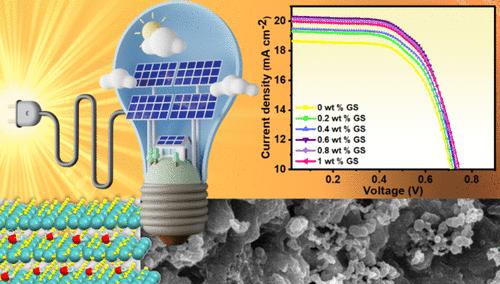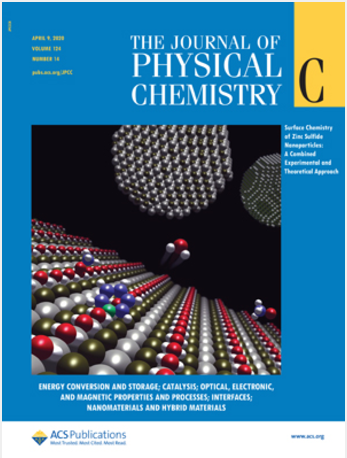Facile Synthesis of Ultrathin 2D Tungsten Oxide Nanosheet as a Next-Generation Material for Enhanced Solar Conversion Efficiency
IF 3.2
3区 化学
Q2 CHEMISTRY, PHYSICAL
引用次数: 0
Abstract
The global energy crisis and dependency on fossil fuels have compelled us to rely on renewable energy-based technology, a more sustainable, eco-friendly energy source. Dye-sensitized solar cells (DSSCs) are one such promising technology. Owing to its unique features, the two-dimensional (2D) tungsten oxide nanosheet is a top-notch photoactive material for DSSC applications. However, their extensive commercialization is limited by cost-efficient and environmentally benign synthesis of an ultrathin 2D nanosheets. In this work, an easily scalable and high-yield mechanochemical synthesis of ultrathin nanosheets has been proposed at ambient temperature. The phase evolution and formation mechanism of the WO3 nanosheet has been investigated by X-ray diffraction (XRD) and scanning electron microscopy (SEM) images. The as-synthesized WO3 nanosheets were structurally characterized by multiple techniques like XRD, Fourier-transform infrared (FTIR), X-ray photoelectron spectroscopy (XPS), Raman, and ultraviolet–visible (UV–vis), while the nanoplate-like surface morphology was characterized by microscopic techniques like field emission scanning electron microscopy (FESEM), high-resolution transmission electron microscope (HRTEM), and atomic force microscopy (AFM). The synthesized nanosheet was combined with a highly conductive graphene sheet (GS) in different doping percentages, and such modified hybrid systems were tested for DSSC application. Under the simulation of one-sun illumination, the DSSC using pristine photoelectrode material demonstrated a solar-power conversion efficiency of 9.31%, while the optimal doping of 0.6 wt % GS exhibited excellent performance with the highest power conversion efficiency of 10.47%, improved IPCE, and long term stability. A device prototype of the DSSC was developed utilizing the same, which continued to perform well for almost 3 months with a meagre loss in its performance. This work provides a promising approach for increasing the efficiency of solar cells by altering the WO3 photoelectrode with GS, which acted as a next-generation material for commercializing DSSCs.

超薄二维氧化钨纳米片的简易合成——提高太阳能转换效率的新一代材料
全球能源危机和对化石燃料的依赖迫使我们依赖基于可再生能源的技术,这是一种更可持续、更环保的能源。染料敏化太阳能电池(DSSCs)就是这样一种很有前途的技术。由于其独特的特性,二维氧化钨纳米片是用于DSSC应用的一流光活性材料。然而,它们的广泛商业化受到成本效益和环境友好的超薄二维纳米片合成的限制。在这项工作中,提出了一种在室温下易于扩展和高产率的超薄纳米片的机械化学合成方法。利用x射线衍射仪(XRD)和扫描电镜(SEM)对WO3纳米片的相演化和形成机理进行了研究。采用XRD、FTIR、x射线光电子能谱(XPS)、拉曼光谱(Raman)和紫外可见(UV-vis)等多种技术对合成的WO3纳米片进行了结构表征,并采用场发射扫描电镜(FESEM)、高分辨率透射电镜(HRTEM)和原子力显微镜(AFM)等微观技术对纳米片表面形貌进行了表征。将合成的纳米片与不同掺杂比例的高导电石墨烯片(GS)结合,并对这种改性的杂化体系进行了DSSC应用测试。在单太阳光照模拟下,使用原始光电极材料的DSSC的太阳能转换效率为9.31%,而最优掺杂量为0.6 wt % GS的DSSC表现出优异的性能,最高的功率转换效率为10.47%,提高了IPCE,并且具有长期稳定性。DSSC的设备原型利用相同的开发,继续表现良好的近3个月,其性能略有下降。本研究为利用GS改变WO3光电极来提高太阳能电池效率提供了一种很有前途的方法,它可以作为DSSCs商业化的下一代材料。
本文章由计算机程序翻译,如有差异,请以英文原文为准。
求助全文
约1分钟内获得全文
求助全文
来源期刊

The Journal of Physical Chemistry C
化学-材料科学:综合
CiteScore
6.50
自引率
8.10%
发文量
2047
审稿时长
1.8 months
期刊介绍:
The Journal of Physical Chemistry A/B/C is devoted to reporting new and original experimental and theoretical basic research of interest to physical chemists, biophysical chemists, and chemical physicists.
 求助内容:
求助内容: 应助结果提醒方式:
应助结果提醒方式:


